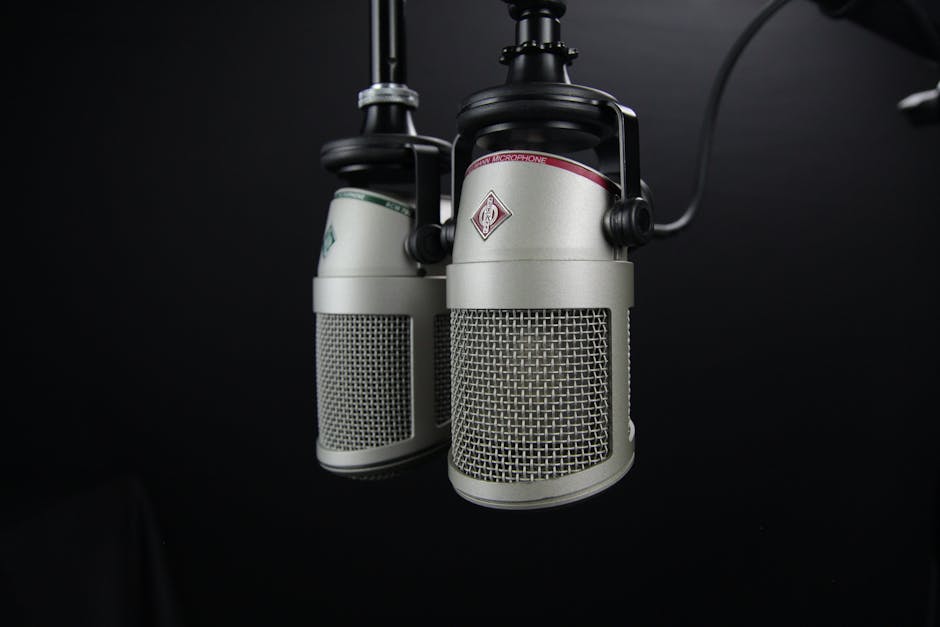My Review of Podcast Advertising Networks (midroll, Advertisecast).
My Review of Podcast Advertising Networks (midroll, Advertisecast)
Navigating the world of podcast monetization can feel like charting unknown waters. As a podcaster who’s spent considerable time exploring various avenues for generating revenue, I understand the appeal – and the challenge – of advertising networks. This isn’t just a theoretical discussion; it’s a deep dive into my personal journey and experience with two prominent players in the space: midroll.com and Advertisecast. My aim here is to cut through the marketing jargon and offer a candid, firsthand account of what it’s like to work with these platforms, from the initial signup to the nitty-gritty of campaign management and, crucially, getting paid.
My Initial Journey into Podcast Monetization: Encountering midroll and Advertisecast
When I first started looking into serious podcast monetization, the sheer number of options felt overwhelming. I knew I wanted to move beyond basic affiliate links and explore more structured advertising opportunities. The goal was simple: connect my growing audience with relevant brands and generate sustainable income for the show. After extensive research and talking to fellow podcasters, two names consistently rose to the top of the discussion for their reach and reputation: midroll.com (part of the Stitcher/SiriusXM family) and Advertisecast. Both promised access to a broad range of advertisers and streamlined campaign management, which sounded like exactly what I needed.
The Promise of Dynamic Ad Insertion and Brand Partnerships
What particularly drew me to these networks was the concept of dynamic ad insertion. The idea that ads could be seamlessly integrated into my episodes, tailored to listeners, and updated over time without me having to re-edit old episodes was incredibly appealing. It promised efficiency and a better listener experience. Beyond the tech, the allure of connecting with established brands that had dedicated advertising budgets was a major draw. I envisioned a world where my podcast could attract high-quality sponsors without the constant hustle of individual outreach. This initial optimism fueled my decision to explore both midroll and Advertisecast, setting the stage for a comprehensive, real-world test.
Unpacking the midroll.com Experience: Navigating Campaigns and Listener Reach
My engagement with midroll.com began with a sense of anticipation. As one of the more established players, their reputation for working with top-tier podcasts and advertisers preceded them. The process of getting accepted into their network involved an application where I provided details about my podcast’s audience, download numbers, and content niche. This initial vetting process felt thorough, suggesting they were careful about the quality of podcasts they brought on board. Once accepted, I gained access to their publisher dashboard, which became my central hub for managing ad inventory.
Onboarding and Initial Campaign Setup with midroll
The onboarding experience with midroll was relatively smooth, though it involved a bit of a learning curve. They have a dedicated team that helps integrate your podcast’s RSS feed and set up the technical aspects for dynamic ad insertion. This usually involves working with your podcast host to ensure compatibility. Once the technical setup was complete, the real work began: understanding the types of campaigns available. Midroll primarily works on a host-read ad model, meaning I, as the host, would be responsible for reading the ad copy provided by the advertiser. This requires a certain level of performance and authenticity to make the ad feel natural within the episode.
Campaigns were presented to me based on my podcast’s demographics and content. I would receive “campaign briefs” outlining the advertiser, their product/service, desired tone, and key talking points. The actual recording and submission process was straightforward: record the ad spot, upload it to their platform, and specify its placement (pre-roll, mid-roll, or post-roll). Given the title of this review, mid-roll placements were a particular focus for me, as they tend to command higher CPMs (cost per mille/thousand listens) due to listener engagement.

Ad Placement and Performance Tracking: What midroll Delivered
Midroll’s platform allowed me to see which ads were scheduled to run and for how long. The dynamic nature meant that ad slots could change, with new campaigns rotating in as old ones concluded. This was a significant advantage over manually baking in ads, as it kept my older episodes monetized without extra effort. For performance tracking, midroll provided a dashboard showing impressions, estimated listens, and revenue generated. While the data was helpful for a general overview, I sometimes wished for more granular insights into listener demographics specific to ad engagement, or A/B testing capabilities for different ad reads.
The revenue model was primarily CPM-based, meaning I was paid per thousand downloads that included the ad. Payments were consistent, though often on a net-60 or net-90 schedule, which is standard in the advertising industry but something to be aware of for cash flow planning. Overall, midroll provided a professional and reliable platform for securing host-read sponsorships, connecting me with reputable brands and offering a steady stream of advertising opportunities, especially for mid-roll slots.
Advertisecast’s Platform in Action: Matching Brands with Podcasts
My experience with Advertisecast offered a slightly different flavor of podcast monetization. Also a well-regarded network, Advertisecast positions itself as a marketplace connecting advertisers directly with podcasts. The initial application process was similar to midroll’s, requiring detailed information about my podcast, audience, and performance metrics. Once accepted, I found their dashboard to be intuitive, presenting available campaigns in a clear, actionable format. Advertisecast also heavily emphasizes host-read ads, leveraging the unique bond between a host and their audience.
Getting Started with Advertisecast: The Pitching Process
One of the distinct differences I noticed with Advertisecast was the emphasis on a more “marketplace-style” approach. Instead of campaigns being assigned, I often had the opportunity to “pitch” my podcast for specific campaigns that aligned with my show’s niche. This involved submitting a short proposal explaining why my audience would be a good fit for the advertiser’s product or service. This proactive element meant I had more control over which brands I associated with, but it also required a bit more effort on my part to actively seek out and apply for suitable campaigns. Once a match was made, the process mirrored midroll: receive ad copy, record the spot, and upload it for dynamic insertion




Post Comment